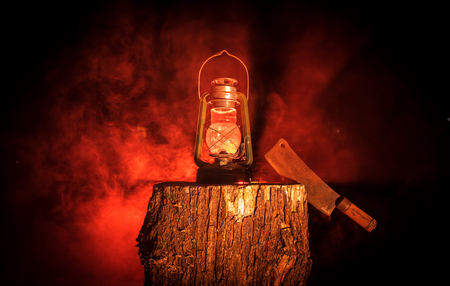Introduction: Mysticism and Divination in British Folklore
Amidst the rolling mists of the British Isles, where ancient stones stand sentinel over the land and whispered legends linger in woodland shadows, the art of divination has flourished for centuries. Crystal ball gazing—known formally as scrying—emerges from these mystical roots, weaving together folklore, superstition, and a longing to pierce the veil between seen and unseen. From the windswept highlands of Scotland to the storybook villages of England, tales abound of seers who held crystal spheres aloft, inviting visions that promised glimpses into fate’s hidden tapestry. The allure of foretelling the unknown became not just a parlour amusement but a cultural fascination, rooted deeply in Britain’s mystical traditions. Here, amid candlelit rooms and fireside gatherings, crystal balls gleamed as symbols of possibility, mystery, and hope—a legacy carried forward by generations of notable British seers whose stories continue to inspire those who seek wisdom beyond the ordinary.
Merlin and the Early Seers: Legends that Shaped British Clairvoyance
The mist-laden hills of ancient Britain have always been fertile ground for legends, none more enchanting than those surrounding Merlin—the archetype of the wise seer whose presence lingers in every tale of British mysticism. As the court magician to King Arthur, Merlin’s name has become synonymous with clairvoyance, prophecy, and a deep connection to the unseen realms. Through whispered myths and bardic songs, Merlin is often depicted wielding mystical artefacts—crystal balls, enchanted staffs, and sacred stones—tools believed to bridge the tangible world with ethereal wisdom.
In the tapestry of British folklore, Merlin stands not alone. Other legendary seers such as Mother Shipton and Thomas the Rhymer contributed their own visionary gifts to the nation’s collective imagination. These figures were said to gaze into reflective surfaces—be it crystal or water—to divine secrets veiled from ordinary sight. Their insights shaped kings’ destinies and guided communities through times of upheaval. The association between these mythic personalities and objects of divination elevated such artefacts from mere curiosities to revered symbols of wisdom.
Seers and Their Mystical Artefacts
| Seer | Artefact | Legendary Role |
|---|---|---|
| Merlin | Crystal Ball, Enchanted Staff | Court advisor, prophet, shaper of destiny |
| Mother Shipton | Scrying Mirror | Prophetess, forecaster of national events |
| Thomas the Rhymer | Fairy Stone | Poet-seer, teller of truths from the fairy realm |
The enduring fascination with these early seers lies not only in their prophecies but also in how they used physical objects to channel intuition and insight. The act of gazing into a crystal ball—or “scrying”—became woven into Britain’s spiritual fabric, a practice both feared and revered. Through these stories, we see how artefacts transformed from simple minerals or glass into conduits for profound revelation.
This legacy continues to shape the way modern Britons perceive divination. Whether encountering tales of Merlin on windswept moors or hearing echoes of Mother Shipton’s prophecies at village fairs, there remains a sense that these tools—and the visionaries who wielded them—hold keys to understanding both history and hidden possibilities. Thus, the mythic past breathes life into present-day spiritual exploration, ensuring that the lineage of British seers endures within both popular imagination and living tradition.
![]()
3. Victorian Spiritualists and the Crystal Ball Revival
As the 19th century dawned, Britain found itself swept up in a fervour of spiritual curiosity and fascination with the unknown. The Victorian era, renowned for its strict morals and rapid industrial progress, also birthed a remarkable revival of ancient mystical practices—none more so than the art of scrying with the crystal ball. In an age where science and superstition often collided, drawing-room séances became all the rage among London’s fashionable elite. Here, mediums and spiritualists would gather, velvet-draped crystal balls at hand, to pierce the veil between worlds.
What set the Victorians apart was not merely their appetite for the supernatural but their ingenuity in reinterpreting it. Influenced by a blend of Romanticism and scientific discovery, British spiritualists such as Florence Cook and Emma Hardinge Britten elevated scrying from rural folklore to urbane spectacle. The crystal ball shifted from being a simple tool of fortune-tellers to an object d’art displayed with pride in upper-class parlours—its surface reflecting both candlelight and whispered hopes for messages from beyond.
This renewed interest gave rise to numerous occult societies across Britain, like The Hermetic Order of the Golden Dawn. These circles didn’t just embrace scrying as party entertainment—they studied its ancient roots, codified new rituals, and wove it into their quest for deeper spiritual truth. For many Victorians, gazing into a crystal was less about predicting lottery numbers and more about seeking wisdom from higher realms or communing with departed loved ones.
It is no exaggeration to say that the Victorian revival transformed crystal ball divination into a cultural phenomenon—a bridge between past mysticism and modern spirituality. Even sceptics couldn’t help but be drawn to the candlelit drama of it all: the hush before revelation, the swirl of silk skirts, the sense that anything—absolutely anything—might be glimpsed within that flawless sphere.
4. Notable Modern British Seers: Stories of Intuition and Revelation
In the tapestry of contemporary Britain, the art of crystal ball divination has not faded into obscurity; rather, it has flourished through the lives of notable modern seers whose stories illuminate the enduring legacy of intuition. These individuals have not only embraced the mystical traditions of their forebears but have also reshaped them to resonate with the rhythms of modern life, demonstrating that the call of the crystal is as potent today as ever.
The Luminaries of Modern Crystal Gazing
Among these respected figures stands Sally Morningstar, a renowned psychic based in Somerset. Sally’s approach combines ancient Celtic wisdom with a gentle, intuitive touch—her readings are known for offering clarity and healing rather than mere predictions. Her journey began with an unexplainable pull towards reflective surfaces as a child, blossoming into a lifelong commitment to spiritual service. Similarly, Cassie Martin from Yorkshire gained national attention for her compassionate guidance during live radio sessions, where she used her crystal ball to provide comfort and insight to listeners facing uncertainty.
Transformative Encounters: Real-Life Revelations
| Name | Region | Signature Style | Notable Contribution |
|---|---|---|---|
| Sally Morningstar | Somerset | Celtic-infused Intuitive Guidance | Authored books on intuitive development; teacher and healer |
| Cassie Martin | Yorkshire | Live Radio Readings | Brought crystal ball readings to mainstream audiences in the North |
| Edward Lane | London | Psycho-spiritual Counselling | Blended Jungian psychology with traditional scrying methods |
Their practices are more than performances; they are acts of service that invite seekers to peer through the veils of self-doubt, fear, or confusion. Many clients recount life-altering moments—a vision in Cassie’s orb that prompted a career change, or a message from Sally that mended a fractured family bond. These stories echo through village halls and city cafés alike, reminding us that true seeing is less about spectacle and more about transformation.
The Ripple Effect: Inspiring a New Generation
This new wave of British seers continues to inspire younger practitioners who blend technology with tradition—offering virtual readings or hosting group meditations centred around crystal balls. The thread connecting them all is an unwavering belief in the transformative power of intuitive insight. Each reading becomes not just a glimpse into possible futures but an invitation to awaken one’s own inner knowing—a gift that lingers long after the session ends.
5. The Crystal Ball in Contemporary British Culture
In the heart of modern Britain, the shimmering allure of crystal ball divination continues to weave its magic, transcending the boundaries of history and stepping boldly into today’s cultural tapestry. While Victorian parlours and candlelit séances may belong to another era, the crystal ball’s mystical presence is unmistakably alive across the UK, finding new expressions in both public and private spheres.
One need only stroll through a bustling psychic fair in Brighton or Manchester to witness firsthand the enduring fascination with this ancient practice. Here, seasoned clairvoyants—often with storied lineages—invite curious souls to gaze into the depths of their scrying orbs, seeking glimpses of love, fortune, or purpose. These gatherings buzz with anticipation and reverence, echoing traditions established by legendary British seers who once captivated courts and commoners alike.
Beyond the lively fairs, private readings continue to flourish in quiet corners of London flats or rural cottages in Cornwall. For many Britons, consulting a trusted medium or spiritual advisor remains an intimate ritual—a way to navigate uncertainty or connect with ancestral wisdom. The crystal ball serves as both a focal point for intuition and a conduit between worlds, its symbolism resonating deeply within Britain’s collective psyche.
Media portrayals have further fuelled public curiosity. From iconic scenes in British television dramas to documentaries exploring psychic phenomena, the crystal ball has become an enduring motif—sometimes depicted with tongue-in-cheek humour, at other times treated with genuine awe. Popular series and podcasts frequently feature interviews with contemporary seers, keeping the tradition vibrant and visible in the nation’s imagination.
Perhaps most tellingly, there is a renewed openness among younger generations who approach crystal ball divination not just as superstition but as a tool for self-discovery and mindfulness. Workshops and online communities abound, inviting participants to hone their intuitive skills or simply explore the rich heritage of British mysticism. In this way, the legacy of notable seers lives on—not merely as folklore but as a living, evolving practice that bridges past and present in uniquely British fashion.
6. Legacy and Continuing Allure: British Perspectives on Scrying
Across the mist-laden landscapes of Britain, from the ancient stone circles of Avebury to the candle-lit parlours of Victorian London, the art of scrying—particularly through crystal balls—has left an indelible imprint on cultural consciousness. The legacy of British seers is more than a chapter in mystical history; it is a living story that weaves together tradition, intuition, and spiritual questing.
The Enduring Influence of British Seers
Notable British seers like Mother Shipton and the enigmatic John Dee did not simply peer into crystals for personal revelation; they shaped how generations perceive fate, destiny, and the unseen realms. Their tales echo through folklore and literature, imbuing the collective psyche with a sense of wonder and reverence for the mysterious. These figures remind us that scrying was as much about storytelling as divination—an invitation to journey beyond the ordinary, guided by both wisdom and wild imagination.
Tradition Meets Modern Curiosity
Despite centuries of scientific progress and scepticism, crystal ball divination continues to capture British hearts. Local fairs, esoteric shops in Cornish villages, and private gatherings still host practitioners who honour old methods while weaving in contemporary perspectives. There is a unique blend of respect for tradition and hunger for personal meaning—a reflection of Britain’s ability to cherish its past whilst embracing new spiritual frontiers.
A Living Spirit: Scrying Today
For many modern Britons, scrying is less about fortune-telling and more about soulful reflection. The crystal ball becomes a vessel for meditation, storytelling, and inner exploration. Whether approached with seriousness or playful curiosity, the practice allows individuals to connect with intuition and ancestral echoes—reminding us that magic often lies in our willingness to see beyond appearances.
The Story Continues
The legacy of British seers endures not only in written records but also in the subtle enchantment woven through daily life. From whispered legends passed around hearthsides to the occasional glimmer of crystal in a window display, there is a quiet acknowledgment that some mysteries are worth keeping alive. In Britain’s collective spirit, scrying remains a bridge between worlds—a luminous thread linking past wisdom to present inspiration.

